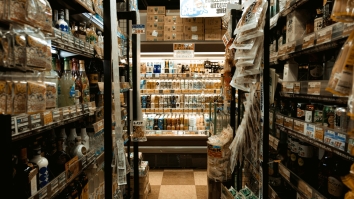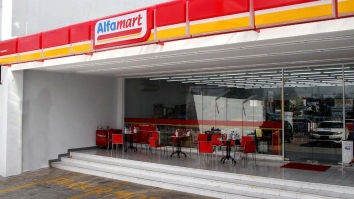
SM Supermalls keeps doors open amidst pandemic, to launch more 'smart cities' and e-commerce channels
It also reached out to displaced jeepney and tricycle drivers to facilitate delivery of orders to far-flung locations in the Philippines.
When the Philippine government ordered the shutdown of malls except for essential services and asked workers to stay home in March 2020, SM Supermalls president Steven T. Tan knew he had a problem. The easy solution was to do nothing, but for Tan there were opportunities in this crisis. Perhaps nowhere else in Asia are shopping malls as important to the people as the Philippines, and with SM’s Mall of Asia being the largest, they are certainly super scaled.
In this interview, Tan shares how he and his team sprung into action: by repurposing laid off jeepney drivers to do deliveries, by establishing a 1 million Viber social community channel, by allowing customers to pick-up their orders curbside—all whilst working with tenants to keep commerce flowing and keeping all employees on the payroll even if they were ordered to stay at home.
From the start of the lockdown, SM already knew that the changes it had to take would not stop on corporate and tenant needs alone. Customers had to be up the priority list, whether they be from commercialized cities or in far-flung areas. SM focused on developing its omni-channel retail efforts in order to meet the new demands and needs of its customers.
Curb-side pick-up, home delivery, and personal shopper services were immediately made available in its shopping malls. SM also tapped into third-party applications like GrabFood and LalaFood to make their tenants reach a wider market amid the pandemic.
“[We] fast-tracked our omni-channel retail efforts so that whether you want to buy anything from the malls or have it delivered to your home or you just want to pick it up on curb-side, [you] can actually call a personal shopper to do your errands for you or you order from the countless third-party application apps that we partner with,” Tan shared.
In far-flung areas where these third-party applications are not available, SM partnered with displaced jeepney and tricycle drivers to deliver orders.
Aside from the corporate working class who lost their jobs during the height of the pandemic, public transport drivers were also out of business as most public transport operations in the Philippines were halted by the government whilst the lockdown was in full swing.
“There are a lot of places where third-party apps are not yet available…we used displaced jeepney drivers or tricycle drivers that were not allowed to take passengers as delivery personnel for the mall, for the shopping centre,” Tan explained.
He shared that by doing so, many jeepney drivers were able to learn and adapt in providing a more sustainable transport service through deliveries.
“They cannot even ply the road or take any passenger, so what they did was they also pivoted. They also transformed their business from a jeepney driver taking on passengers to a delivery service for the shopping centre, to deliver goods for the people,” he said.
Adapting to the ‘new normal’
SM Supermalls also had to adapt and turn to mobile channels in order to reach their customers.
During the lockdown, movement was restricted for everyone who were not considered essential workers. This resulted in the majority of Filipinos switching to now-giants in e-commerce Shopee and Lazada in order to fulfill their shopping needs.
Other online sellers outside these two platforms would also opt to deliver their goods via Grab, Lalamove, or other delivery or courier service. This spike in online retail shopping introduced a new change to local buying trends in the Philippines.
Tan said the very next day the first lockdown was imposed, SM set up its own Viber community. From having 100,000 followers overnight, it now has millions.
“[Our] Viber community is the biggest Viber community created. We created that Viber community the following day the mall was on lockdown. The mall was locked down on March 16 [2020]. On March 17, the Viber chat group is already up and overnight we had over 100,000 followers,” he added.
From exploring fresh ideas to reach their customers, Tan shared that SM Supermalls also provided rental relief for tenant partners and assisted in the reopening of their businesses. The same benefits were provided for micro, small and medium enterprises (MSMEs) which first opened or fought to survive during the pandemic.
“Our tenant partners were very much affected negatively of course but we didn’t stay still. First, SM [gave] rental relief. Then, we used the time to prepare them for the reopening of the malls,” Tan said. “We promoted our safe malling procedures heavily, help the so-called MSMEs or micro and small and medium entrepreneur tenants to open and survive. We also invested heavily in technology to keep the malls clean and COVID-free.”
Expansion plans post-pandemic in the Philippines and China
With shoppers going back to the malls in the recent months, Tan is positive that the SM shopping mall experience will continue to be a hit among Filipinos.
“We are bullish about the Philippines and I think as soon as the vaccine is here, we foresee that there will be a return to a high growth to our economic status as we have had in the previous years prior to the pandemic,” he said.
New malls will open in the Philippines by the third quarter of this year. Included in the list of newly opened and soon-to-be-launched malls are SM Butuan and another SM in Zamboanga in Mindanao, SM City Roxas in Visayas, and SM City Grand Central in Monumento in Luzon.
“We do not intend to slow down on our commitments to grow especially in underserved regions like Mindanao… SM Butuan and SM [in] Zamboanga opened to high volumes of foot traffic all eager to have the branded SM experience,” Tan shared.
“These are all happening within the year… the tenants are already constructing. We are opening these malls by third quarter this year. But aside from new malls, we also have many malls which are expanding and renovating in the next five years,” Tan said, adding that renovations will also be done to existing malls.
Compared to the situation experienced by the company in the Philippines, however, Tan said construction activities in China progressed fast last year.
“Last year, China was a revelation. At the beginning of last year, the pandemic did have a certain impact in SM’s new project in China but with the efforts and support [by] their government pushing for the economy to move forward, [they] recovered very quickly,” he recalled.
“[Once] the pandemic lockdown was lifted, we were able to start construction by the second quarter of 2020 last year as there was not really so much restriction in terms of construction as compared to operational malls,” he added.
SM Supermalls is poised to open SM Xiamen Phase 3 and SM Yangzhou soon, adding to SM’s already stellar portfolio in China.
Tan shared that business recovery was faster in China. The country closed its borders in February 2020, resulting in an earlier reopening date. By May 2020, the malls reached 80% of its previous year’s sales.
“We closed malls here in the Philippines mid-March but in China, as early as [the] first or second week of February they already closed… In late March they were already back to normal, and as early as May last year, they were almost at 80% of the previous year’s sales,” Tan revealed.
Future projects to include ‘smart cities,’ digitalisation of services
Tan compares shopping malls in the Philippines as modern-day plazas. This, partnered with Filipinos’ preference of shopping in person, makes SM's projects a hit in the country.
“Filipinos are more tactile…I think it’s [in] the Filipino culture that they really want to meet up with friends, go out and dine together, and to go out to the mall, unlike in China where you have other areas where you could enjoy—like go to parks, go to museums, etcetera,” he said.
The real estate giant owns and operates residential condominiums, office buildings, several e-commerce centres, resorts, convention centres, concert venues, and a university, apart from its numerous malls and stand-alone supermarket branches.
Tan shared that in the future, SM is looking into creating more "smart cities", similar to that of the Mall of Asia complex located in Pasay City in Metro Manila. The Mall of Asia complex covers 67 ha, in which the shopping centre alone occupies 19 ha of footprint.
“I think SM still is very committed to [delivering] sustainable, resilient and smart communities through its real estate portfolio, whether it’s malls that’s integrated with schools,” he said.
“We have a lot of assets [that] are part of a community where everything is within easy reach and transportation is not going to be a problem, so [in] the future there would be smart cities that would be put up all over the country,” he emphasized.
When asked if SM is positioning itself alongside international giants such as Alibaba, Tan said the company would prefer to work with them rather than compete.
“We’re not here to compete with any online or e-commerce platform. As a matter of fact, we embrace them. We welcome them to our malls,” he said.
SM Supermalls is committed to keep its target of opening five to six new malls per year. With a total of 76 malls currently under operation in the Philippines, the company aims to reach more communities in the coming years.
Tan acknowledges that in line with SM’s commitment to make customers the priority in all its projects, e-commerce must be integrated in all its upcoming plans.
“Customer is king. You have to give whatever they are looking for and make it available to their doorstep," Tan said. "A brand has to be shoppable and shippable. It cannot just be either or— it has to be both, and you have to create that memorable customer experience in your brick and mortar store to be able to compete with e-commerce.”
For more information, subscribe now to Real Estate Asia's channels in Spotify and Apple podcasts.





















 Advertise
Advertise








